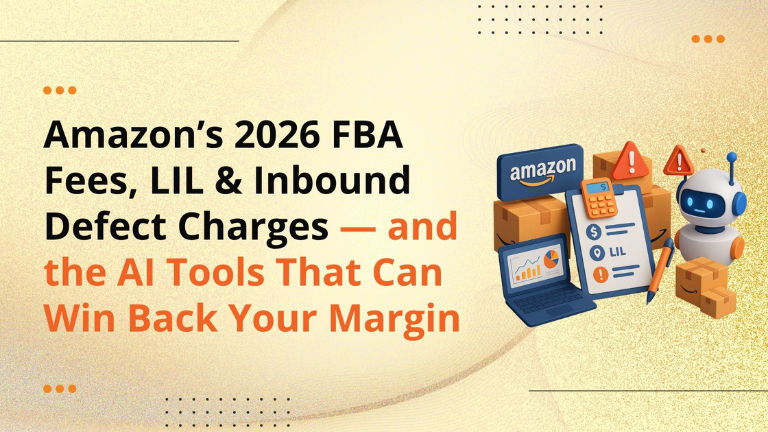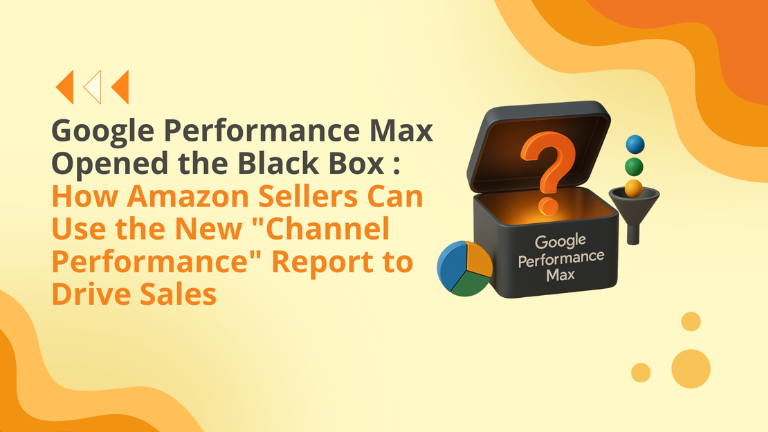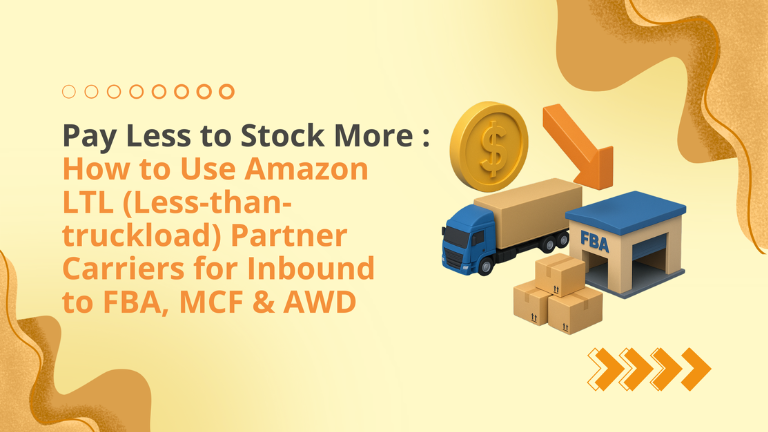For many Amazon brands, profitability is decided in the pennies — carton sizes, dim weight, stock days, and ad efficiency. In 2026, Amazon will raise FBA fulfillment fees by an average of $0.08 per unit and adjust several adjacent fees (LIL, inbound, returns). The good news: Amazon also expanded AI-powered Video Generator so you can lift conversion without big creative budgets. This guide turns the policy changes into a concrete playbook — what’s changing, where margin leaks, and how to counter with operations and creative.
Contents
What’s changing in 2026 (and when)
- Fulfillment fees: non-peak fees resume Jan 15, 2026 with average +$0.08; weight/dimensional rules and bulky tiers get sharper.
- Low-Inventory-Level fee: calculated more precisely at seller-FNSKU; fee scales with days of supply below ~28 and unit size/weight.
- Inbound defect fees: misrouted/abandoned/deleted shipments consolidated into one higher fee (no stacking), rising materially for standard & bulky goods — accuracy is now a cost center.
- Returns processing fee: applied to items with higher return rates; billed on a delayed cadence each cycle.
Amazon’s own update sums it up: small average increase, but with granular pricing and compliance-linked charges sellers must model carefully.
Where margins leak (and how to plug them)
- Inventory DOS & LIL
Keep 28–45 days of supply at the FNSKU level; raise reorder points on top sellers to avoid per-unit LIL taxes. Build a weekly DOS report that flags SKUs slipping below threshold. - Inbound Compliance
Create a pre-ship checklist: label format, carton dimensions/weights, routing, ASN accuracy. Minor defects used to cost cents; 2026 rates make sloppiness expensive. Train 3PLs to the new table. - Dim Weight & Packaging
Re-cartonize to reduce dimensional weight on Large Standard/Small Bulky; explore SIPP certification to lower handling (where eligible). (See Amazon’s placement/handling pages for 2026 changes.) - Returns Discipline
High-return ASINs deserve PDP fixes (clarity imagery, size guides, compatibility charts), QC checks, and post-purchase guidance to curb the returns processing fee. - Creative Leverage (AI Video)
Deploy Amazon’s Video Generator: multi-scene, spec-compliant SBV videos built from your images in minutes — a fast path to higher CTR/CVR and lower CPC waste.
14-day BIE action plan
- Day 1–3: Baseline — export 90-day units, fees, dims, DOS; tag high-return ASINs.
- Day 4–6: Model — apply 2026 fee tables; simulate LIL/inbound-defect exposure by SKU and route.
- Day 7–9: Fix Ops — inbound SOP v2, cartonization tweaks, SIPP review, reorder-point updates.
- Day 10–12: Create — generate 3–6 AI videos for top ASINs; launch SBV A/B.
- Day 13–14: Measure — compare CTR/CVR/ROAS and fee drag vs. prior; keep only ROI-positive changes.
Explore how we operationalize this for brands on BIE’s Amazon growth services.
Want us to drop in the 2026 calculator, SOPs, and AI video tests — then prove the lift?
Follow Big Internet Ecommerce (BIE) on Instagram & LinkedIn to stay updated with the latest trends in Amazon selling.






